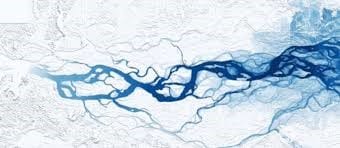With the fast urbanization process, population growth, economic development, infrastructure aging and climate change, all elements of coastal urban hazard risk, including the extreme weather probability, hazard probability, exposure of people’s lives and properties and vulnerability are all increasing, which leads to one of the major threats for coastal cities. The urban public safety has already received high international and national concern, and been included in some official promulgation such as “Sendai Framework for Disaster Risk Reduction 2015-2030” by the United Nations and “Outline Development Plan for Guangdong-Hong Kong-Macao Greater Bay Area” by the Chinese Central Government. Typhoon Hato and Mungkhut caused serious damages to Shenzhen, Hong Kong, Macao and other cities in the Greater Bay Area. How to live with coastal natural hazard and protect people and properties is a major challenge facing Center for Regional Ocean (CRO).

Integrative perception system of space, aerial and ground sensors for data and hazard monitoring
Hazard mitigation for coastal urban groups requires multi-source and multi-dimensional data as support. The integration of space, aerial and ground monitoring technique provides a strong support for data collection in both temporal and special scale. By developing such an integration monitoring system, we could achieve:
- Connection in space: coastal urban hazard transports broadly in space; therefore, it is essential to incorporate urban area, river network and ocean environment as an entire system in research. Early warning and monitoring can then be conducted in regional and local scale.
- Real-time monitoring: coastal urban hazard evolves rapidly in time; therefore, hazard must be recognized timely and decisions be made quickly. Responding actively, rather than suffering passively, could effectively reduce fatalities and losses.
- Virtual reality: coastal urban hazard is large in scale; therefore, physical experiment is difficult to reproduce the whole process of hazard. Numerical simulation is then utilized to study hazard in both global and local ways. Virtual reality can be created for us to develop hazard risk management and real-time motoring system by inputting, fusing, analyzing and emerging the numerical simulation results and monitoring data.

Numerical model for urban hazard simulation
Numerical simulation is an important method for hazard mitigation. Taking the advantages of the abundant data from the integrative monitoring system, the numerical model can be validated and refined repeatedly and achieve a satisfying accuracy. With the development of super computing system in SKL-IOTSC of UM, both accuracy and efficiency of numerical model could be ensured. The reliability and lead time of prediction will be greatly improved.

Artificial intelligence and big data technology for hazard recognition and prediction
The integrative data monitoring system and big data technology such as AI will greatly facilitate hazard recognition, prediction and early warning. The fast development of AI, big data and IOT technology forms an unprecedented platform and opportunity to implement large-scale multi-dimensional real-time hazard perception and analysis across space and time. The Center for Regional Ocean will develop an AI platform for accurate and fast coastal urban hazard prediction based on state-of-art technology, with the all-round aid of historical data, real-time monitoring input and numerical simulation.
Related publications:
- Gao, L.M. Zhang, X.Y. Li, and S.Y. Zhou. “Evaluating Metropolitan Flood Coping Capabilities under Heavy Storms.” Journal of Hydrologic Engineering, vol. 24, no. 6, 05019011.
- Gao, L.M. Zhang, H.X. Chen, and P. Shen. “Simulating debris flow mobility in urban settings.” Engineering Geology, vol. 214, pp. 67-78.
- Shen, L.M. Zhang, H.X. Chen, and R.L. Fan. “EDDA 2.0: integrated simulation of debris flow initiation and dynamics considering two initiation mechanisms.” Geoscientific Model Development, vol. 11, no. 7, pp. 2841-2856, 2018.
